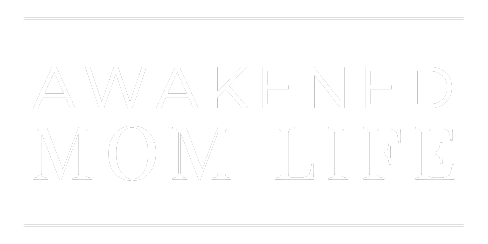Let’s explore the relationship between trauma and your personal identity. Starting from an early age, humans begin to hide parts of ourselves as a way to stay safe. In the brain’s adaptive nature, it can cut us off from our authenticity to protect us from perceived threats during childhood.
The brain prioritizes core needs for survival, directly impacting how you embrace authenticity in childhood.
- Safety: Protection from physical and emotional harm
- Security: Assurance of basic needs being met, such as food, shelter, and stability.
- Social Connection: Belongingness and acceptance within social groups
You see, our ancestors had to live in groups for survival. They couldn’t properly stay safe, warm, and fed if they were isolated and alone. This survival instinct is still very active in all of us, and it plays a significant role in how trauma shows up in our lives. Especially as children, because our subconscious adapts to our environment to keep us psychologically and physically safe.
Here are a few examples of how your survival instincts show up in childhood trauma.
I used to be a cheerful and playful child. However, living in an atmosphere of yelling, anger, and chaos, my young brain didn’t understand that it wasn’t my fault. I believed I was to blame for the adults always being angry. To survive, my brain led me to create a subconscious inner narrative of “being happy and playful is wrong; therefore, I must hide this part of myself. When we are playful, we anger adults, which is unsafe.”

By subconsciously creating this inner story that I needed to stay invisible, I could maintain a sense of security (even if it was minuscule). I gained a slight sense of safety because it meant I was less likely to be physically abused, and it meant a small chance of having a social connection.
Another example is that I was parentified as a child. This means the child becomes responsible for the caretaker’s emotions—you almost become their caretaker.
When I was young, details about finances, family drama, and even marital problems were shared with me. At that point in my life, my brain craved acceptance and love.
So, I learned that I needed to listen and support the adults emotionally.
Yet when I attempted to get emotional support in return, I was shut down and yelled at. From all of this, my brain learned that it’s not safe to share my feelings or ask for help; it’s dangerous. And I’m supposed to take on everyone else’s emotions, no matter how bad it feels.
When you are a child, your brain hasn’t developed enough to use emotional intelligence and logic to rationalize that adults arguing is not your fault. We weren’t able to understand that adults shouldn’t share inappropriate details with us. When we lack proper guidance and support as children, our brain attempts to create a story using the limited information available to make sense of our situations.
This leads to us internalizing a toxic inner narrative based on the dysfunction we are surrounded by. Then, our brain internalizes those dysfunctions and shifts our biology so we can survive. (Take the ACE quiz to see how childhood adversity has impacted you)
Now, there are two other core needs that your brain prioritizes, which I still need to mention.
There are two survival needs that become deprioritized in childhood trauma. Yet they don’t go away. They are actually what’s driving you to be here. It’s that deep longing for something that is missing in your life.
- Autonomy: Independence and control over one’s actions and decisions
- Fulfillment: Meeting psychological and emotional needs, pursuing goals, and experiencing satisfaction and purpose in life.
As humans, we crave a sense of self-expression, purpose, and control in our lives, this is what it means to embrace authenticity. We also crave emotional safety and connection. When we don’t have these things because of trauma, it creates a strong inner turnout. Survival mechanisms are so deeply ingrained that they continue into adulthood even when they are no longer serving us.

Childhood trauma leads us to mask and hide parts of ourselves for safety. This leads us to hide our authenticity. So much so that we may not even understand who we are authentically. It took me years to figure all this out. I had no clue what I wanted in life; I was so used to making sure I made everyone else happy.
When you are not living a life that embraces authenticity, it’s painful. It leads to disconnection from ourselves, others, and the world around us. It creates inner turmoil and a persistent feeling of being out of alignment with our true essence.
This disconnect between who we are and who we present to the world can contribute to feelings of emptiness, anxiety, and depression.
This is where somatics becomes a powerful tool for healing and reconnecting to our authenticity. Somatic practices help us tune into our body sensations, emotions, and inner wisdom, bypassing the brain’s protective mechanisms. By cultivating self-awareness and self-compassion through somatics, we begin to unravel the layers of conditioning and trauma that have kept us disconnected from our true selves.

Authenticity is not just about being true to who you are; it’s also about honoring your feelings, needs, and values. It’s about living in alignment with your core beliefs and expressing yourself authentically in all areas. Embracing authenticity is a key to happiness because it allows us to live in a place of integrity and wholeness.
You are not broken, and you can still embrace authenticity.
When you have trauma, you are living with layers of pain on top of who you truly are. Healing is about peeling off those layers and finally allowing your true self to shine through so you express yourself wholly.
I understand that some people may think that being able to embrace authenticity is not safe. I can relate to this feeling because I used to mask in most situations even after I realized I was doing it. I felt like I still had to be very careful about my behavior. However, it was exhausting still. Allowing myself to heal and release the masks has been far more fulfilling and takes up a lot less energy. I want to emphasize the importance of practicing authenticity in a safe space for healing.














